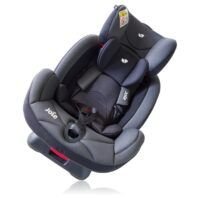Like every other state in the United States, Michigan also has various child safety laws to help protect children from car accidents and crashes. According to my research, car crashes and accidents are among the leading causes of deaths and injuries for children, so it is important to follow every safety law that exists in your state. In this article, we’ll be talking about the Michigan car seat laws, their importance, and how to apply them when riding with your child.
Table of Contents
How to keep your child safe using a car seat
Before we delve right into the Michigan car seat laws, there are certain tips to follow to ensure the safety of your child anywhere in the country. Firstly, you need to install the car seat properly.
Most car seats are equipped with a LATCH system with connectors and color notifications that ensure your installation is correct. You can also use the seat belt to tightly secure the car seat.
Whichever option you choose, just ensure it follows the manufacturer’s instructions and meets Federal and state standards. Secondly, always make sure the seat is the appropriate size for your child.
Every car seat is made specifically for a size and height range. It is your job to ensure that your child is neither under-sized nor oversized for the seat. You can do this by checking the descriptions in the seat and reading reviews.
Lastly, but not least, never reuse a car seat that has been in a crash. According to the NHTSA, car seats that have been in a crash should be disposed of properly, and the parents should immediately get a replacement.
This is because a single crash can weaken the safety features of the seat, thereby increasing the risk of fatal injuries on your child if the seat is ever used again. This is also valid for seats without visible damage.
To properly dispose of a damaged car seat, you’ll need to recycle it. Avoid dumping it in your trash so an unsuspecting parent doesn’t use it and put their child in danger.
Car seat types and what Michigan Law says about them
If you’re a parent, then you’re already familiar with all the types of car seats, namely rear-facing, forward-facing, booster seats, and convertibles.
They all serve different purposes and are made specifically for different sizes and ages, which have been adopted by the Michigan government to create laws for car seat use. Below are the Michigan car seat laws:
Rear-facing
Michigan car seat laws state that children below 4 years of age should use the rear-facing car seat until they come of age or meet the height and weight requirement of advanced car seats.
The rear-facing car seat option is very important for this stage because it provides complete protection from the force of crashes and accidents.
Forward-facing
According to Michigan car seat laws, only children who meet the height and weight requirements of a forward-facing car seat should use it. This is usually around when a child reaches 2 years old.
A forward-facing position is necessary for this stage in your child’s development because they need legroom.
Booster car seat
According to Michigan car seat laws, booster car seats are for children above 4 years old or any child that has exceeded the weight and height limit of the forward-facing position but cannot advance to the adult seat belt yet.
While the law is not stringent in this category, having your child in a booster car seat will keep them very comfortable when compared to an adult seat belt, which will rest on awkward body parts.
Seatbelts
Lastly, your child can advance to the adult seat belt after their 8th birthday. However, you should ensure that the child is ready to advance to the adult seat belt category.
Exceptions to Michigan Car Seat Laws
Michigan car seat laws do not apply to all types of vehicles and situations. Before boarding a taxi or getting into a vehicle that’s not yours, the exceptions to Michigan car seat laws.
Exempted Vehicles
According to Michigan car seat laws, the exempted vehicles include motorcycles, buses, taxis, and school buses. For some of the vehicles, we already know why the laws do not apply.
For example, a motorcycle cannot accommodate a car seat nor can a taxi. You’ll have to secure your child yourself if you’re using either of the vehicles. For example, you hold your child tightly if you’re boarding a taxi.
For motorcycles, I’ll say it is not safe to ride with a child below 8 because of balance issues. Since the law is not stringent in these vehicles, ensure to secure your child properly in any vehicle.
Cars Manufactured Before 1965
The modern cars we have today with the three-way seat belt entered the market in 1965. They are built with safety in mind, unlike older vehicles.
While it is very unlikely to have such old cars still in operation today, some parents are in love with vintage cars. If you’re like those parents and residing in Michigan, you should know that the Michigan car seat law doesn’t cover your child.
So, you have to manually secure them whenever they’re in such a vehicle. I’ll recommend not to even have a child in an old vehicle without a seat belt, or one that’s lacking modern safety features.
Special Medical Or Physical Conditions
Certain medical and physical conditions may exempt a child from using a car seat. If your child complains of discomfort after using different types of car seats from different brands, consult a medical professional and get a document from the Secretary of State that exempts that child from using a car seat.
But that doesn’t mean your child is left vulnerable, quite the opposite. Because of their special condition, the department is laden with the responsibility of looking for another solution to ensure the safety of your kiddo.
Should your child sit in the front of the car?
This is arguably one of the most asked questions when it comes to car seat laws. Should your child sit in the front of the car or not? The answer to this is straightforward, No.
While the front passenger seat is protected with an airbag to reduce the risk of injuries during an accident or crash, that force can be harmful to an underdeveloped child.
That’s why it is advised to always keep your child in the backseat, which is the safest area of the car. The back seat is designed to keep your child far away from any force from the front, while the car seat itself is designed with side impact protection to eliminate the risk of injuries from side collisions.
Frequently Asked Questions
I have a two-seater car. Can I ride with my child in front?
Having a two-seater car as a parent is not advisable. You should get a car with a back seat to accommodate your child. However, if you’re working on a limited budget, then you’ll have to push the passenger seat as far back as possible. Ensure it is very far away from the airbag and you’re good to go.
Can I use a car seat in the front seat?
The front seat is not designed to accommodate a car seat, besides it is a safe option. The best place to place your child’s car seat is at the back seat, installed with LATCH connectors or the seat belt.
Can I use a booster seat for my 3-year-old child?
Booster car seats are made for children from 4 and above. Children below that age should stick with rear-facing and forward-facing position seats. This is essential for their safety.
If your child is below, use the rear-facing position, and if he/she is above 2 and meets the weight and height requirements, switch to a forward-facing position.
You can only buy the booster seat for a 3-year-old when the child meets the weight and height requirements before their 4th birthday. The weight requirement is 40 pounds.
Do I need to secure my child with a five-point harness system?
The five-point harness is made to secure your child to the seat, thereby reducing the risk of forceful ejection during a collision. In addition, a five-point harness protects the soft body parts of your child by evenly distributing the force of the crash to the hardest parts of the body. So, yes, a Five-point harness is very important for your kiddo.
What does the Michigan car seat law say about my baby’s duration in my car?
While the law doesn’t explicitly talk about how long your baby is allowed in a car seat, car seat manufactures and the NHTSA advises that developing infants should not spend more than 2 hours a day in a vehicle.
Conclusively, Michigan car seat laws are very clear. They are put in place to protect your little one. Ensure to follow each rule during your stay in the great lake state. If you’re visiting another state, ensure to read their car seat laws too as they may vary. Stay safe.








